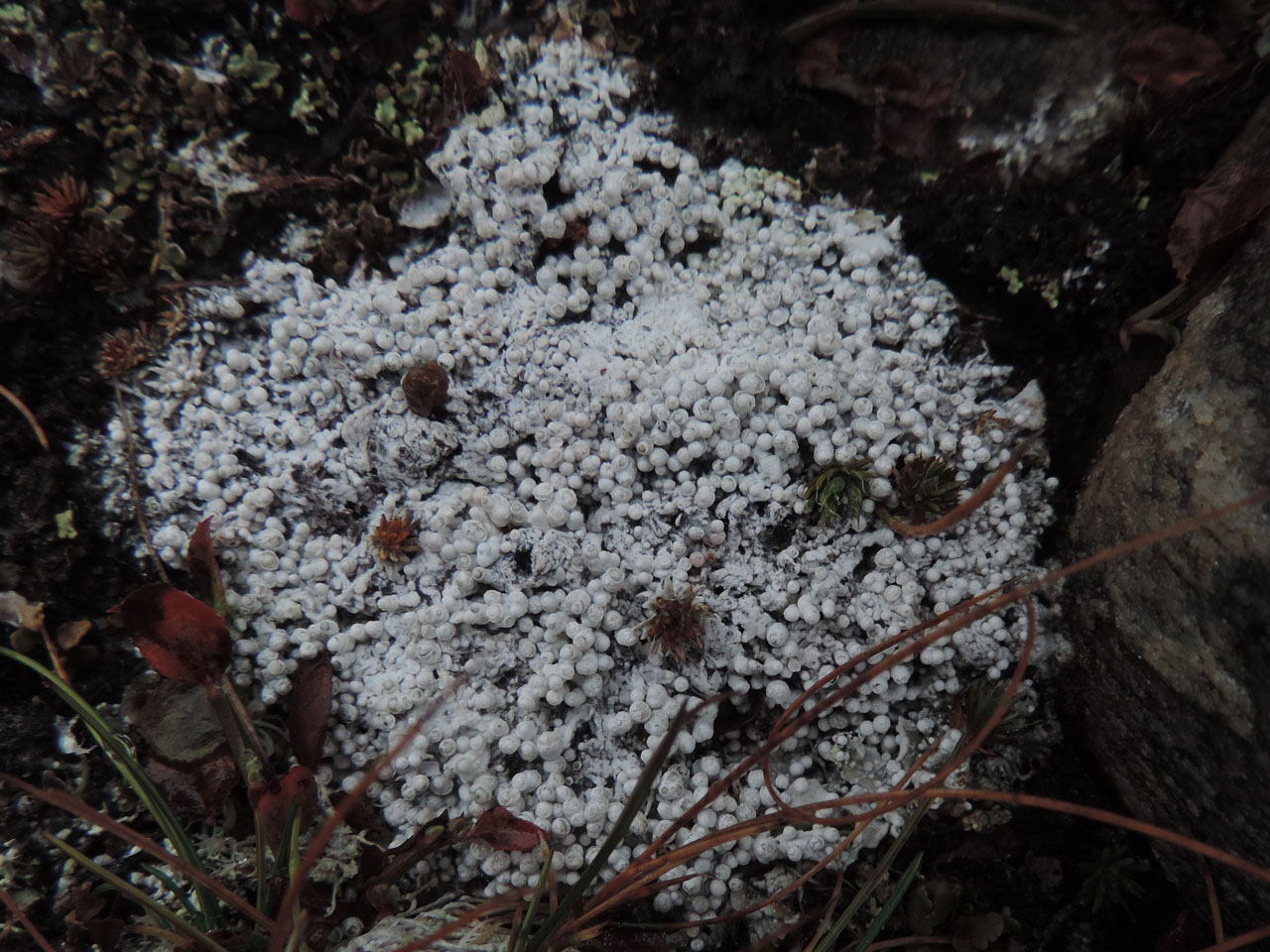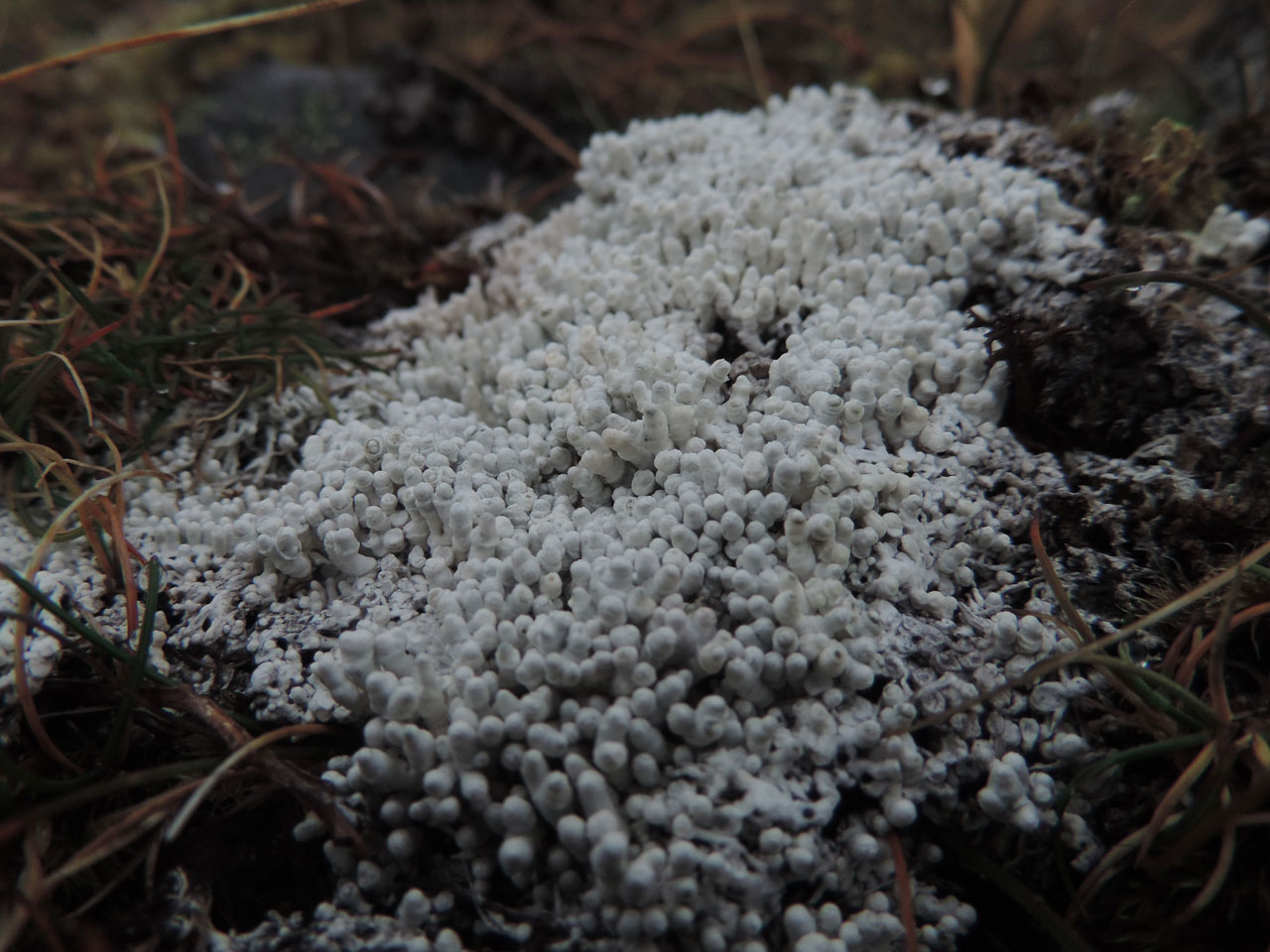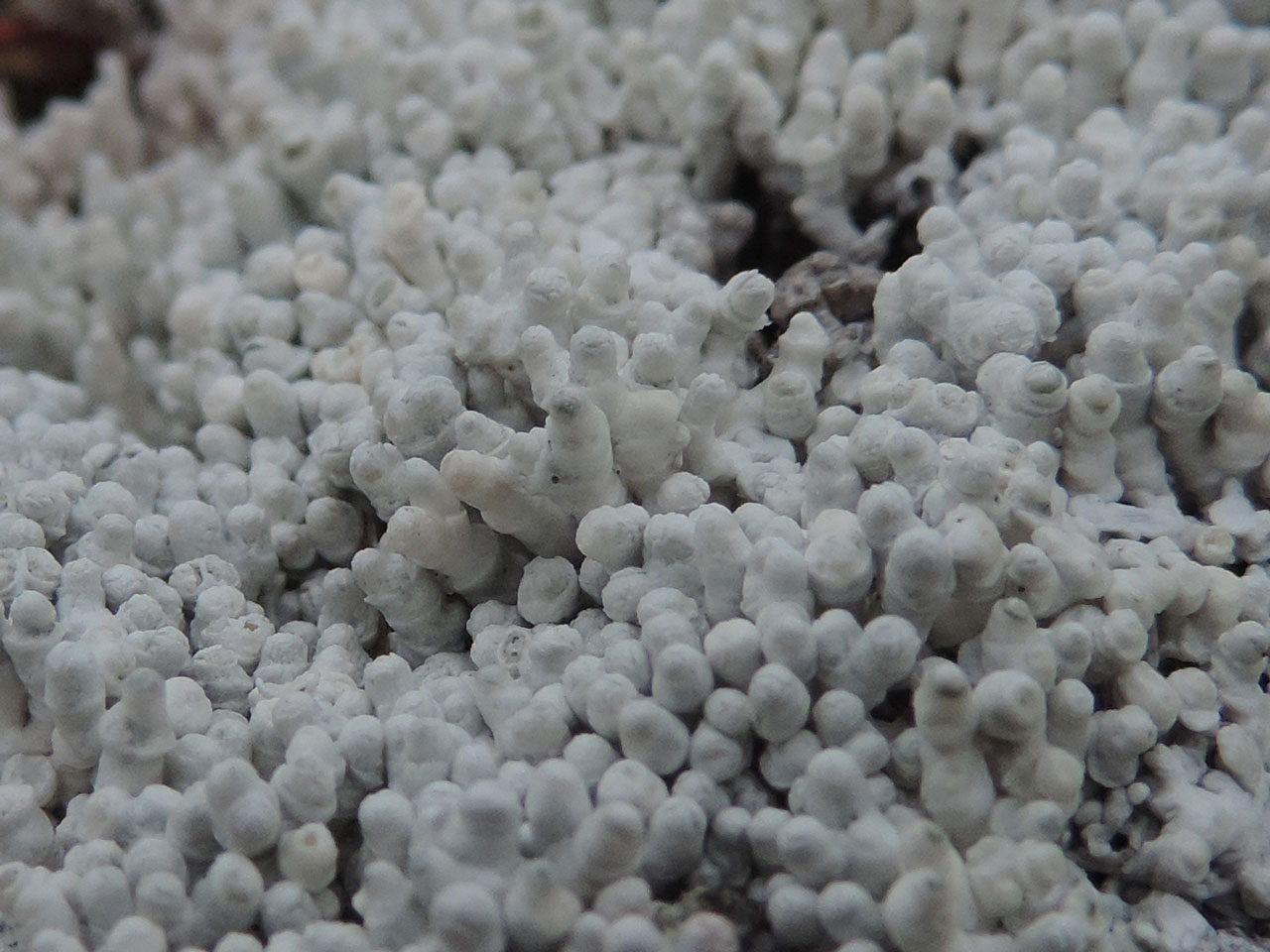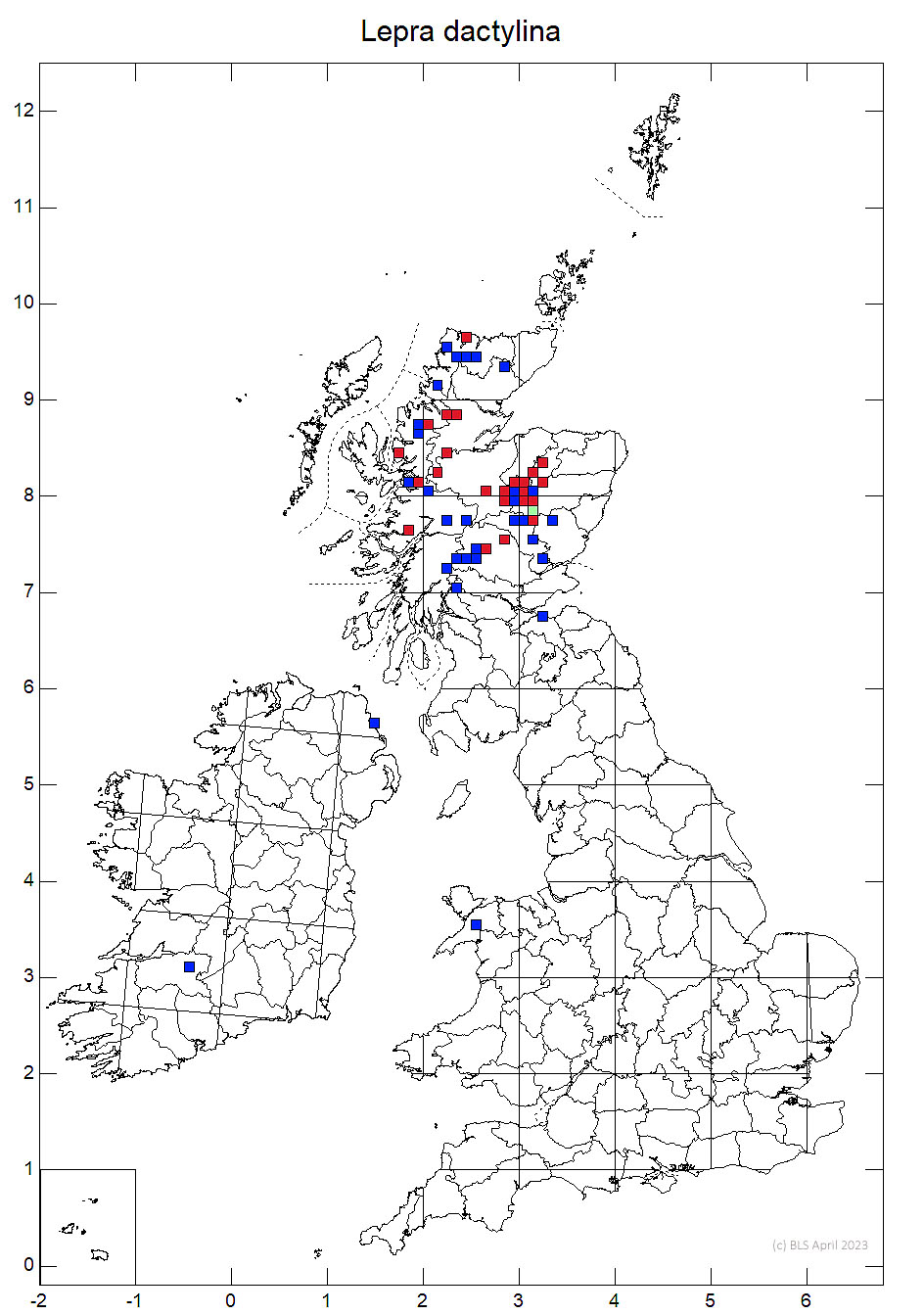A spectacular terricolous lichen found in wind blasted montane fellfield habitats, consisting of masses of fat white columnar isidia. The similar Pertusaria oculata also occurs montane terricolous habitats but has characteristic darker brown to black tips to the isidia, which are K+ violet-purple.
Thallus thin, white, smooth or uneven, mainly obscured by erect crowded isidia 1–2.5 (–4) mm tall × 0.4–1 mm diam., robust, at first papillate, becoming columnar, mostly unbranched, at times 2- or 3-forked, occasionally becoming fused, ± constricted towards the base and blunt and rounded at the apices, which are I+ blue. Fertile warts very rare; apothecia 1 per wart, immersed in the apices of the isidia; disc (0.2–) 0.5 (– 1) mm diam., ± black, often white-pruinose and surrounded by a torn warted margin. Asci 1-spored. Ascospores 120–300 × 60–100 μm, wall 3–5 (–10) μm thick, smooth. Thallus C–, K+ yellow, KC+ yellow, Pd+ red, UV– (fumarprotocetraric and ±protocetraric acids).
Characterised by the stout, peg-like isidia with concolorous tips, reacting Pd+ red and the montane, terricolous habitat. Pertusaria oculata occurs in similar habitats but develops more numerous slender grey coralloid isidia with characteristic darker brown to black tips which are K+ violet-purple.
On soil, mosses and decaying vegetation, sometimes in grassland, mostly above 900 m alt.

Local. N. Scotland (Highlands), one record from N. Wales (Snowdonia).
Very rare outside of the Scottish Highlands
Britain: Notable
Wales: Vulnerable
Cannon, P., Kukwa, M., Coppins, B., Fletcher, A., Sanderson, N. & Simkin, J. (2021). Pertusariales: Ochrolechiaceae, including the genera Lepra, Ochrolechia and Varicellaria. Revisions of British and Irish Lichens 5: 1-17. Link



